There’s a reason why the Toyota 2UZ-FE is such a popular engine choice among car enthusiasts; but when you take a closer look at the spec sheet, you might wonder why that is the case.
The truth comes down to the upgradability of this engine and some of the finer details in its construction.
In this guide, we’ll walk you through everything you need to know about this low-end torquey engine, and we’re confident you’ll see what all the hype is about by the end.
A Brief History of the 2UZ-FE Engine
The first batch of Toyota’s UZ engine line-up dates back to 1989. It had a long production run that lasted 24 years — they stopped making these in 2013. However, Toyota had three different engines under the UZ production line, the 1UZ-FE, the 2UZ-FE, and the 3UZ-FE.
Some of the early 2UZ-FE engines were installed in vehicles like Toyota Land Cruiser and the Lexus LX 470 back in 1998. However, the initial UZ-FE engines did not include VVT-i (Variable Valve Timing with intelligence) or electronic throttle control.
In 2004 they upgraded the engine to include these features and installed them in both the Lexus GX470 and the Toyota Sequoia.
But while the UZ engine line continued until 2013, the last production 2UZ-FE to ever be seen was made in 2011 — unless you consider the Hong Kong market; then the last one was made in 2012.
Comparison With the 1UZ-FE and 3UZ-FE
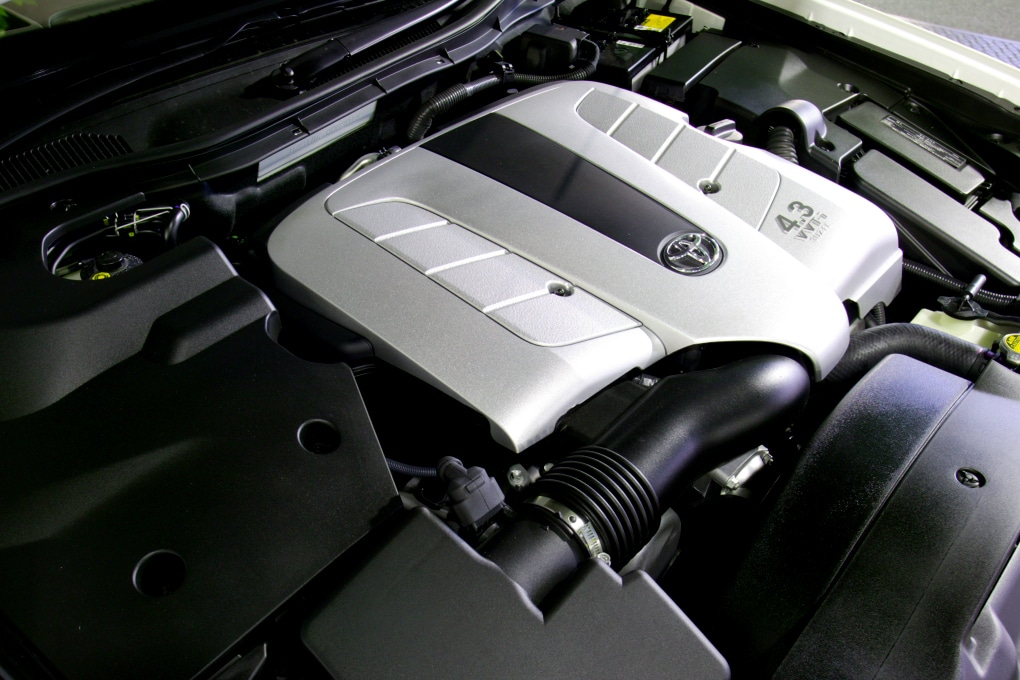
Falling under the same engine code, the 1UZ-FE, the 2UZ-FE, and the 3UZ-FE engines are all similar. However, while they’re similar, there are some unique differences you’ll want to take note of.
First, the 2UZ-FE is the only engine in the line to use a cast-iron block. This dramatically increases the engine’s life, but it also makes it significantly heavier. Even then, Toyota unveiled this engine as a more durable and longer-lasting option.

But compared to the 1UZ-FE, it’s a very similar engine. They both have aluminum DOHC cylinder heads, an MFI fuel injection system, one-piece cast aluminum camshafts, and a cast aluminum intake manifold.
Meanwhile, the 3UZ-FE was more of a direct upgrade to the 1UZ-FE, while Toyota opted to install VVT-i and electronic throttle control to newer 2UZ-FE engines instead of coming up with another variant for it.
Where to Find the Toyota 2UZ-FE
If you’re interested in buying a 2UZ-FE engine, you need to know where to look. Because there are two different variations of the 2UZ-FE, we decided to list the cars that came with each variant.
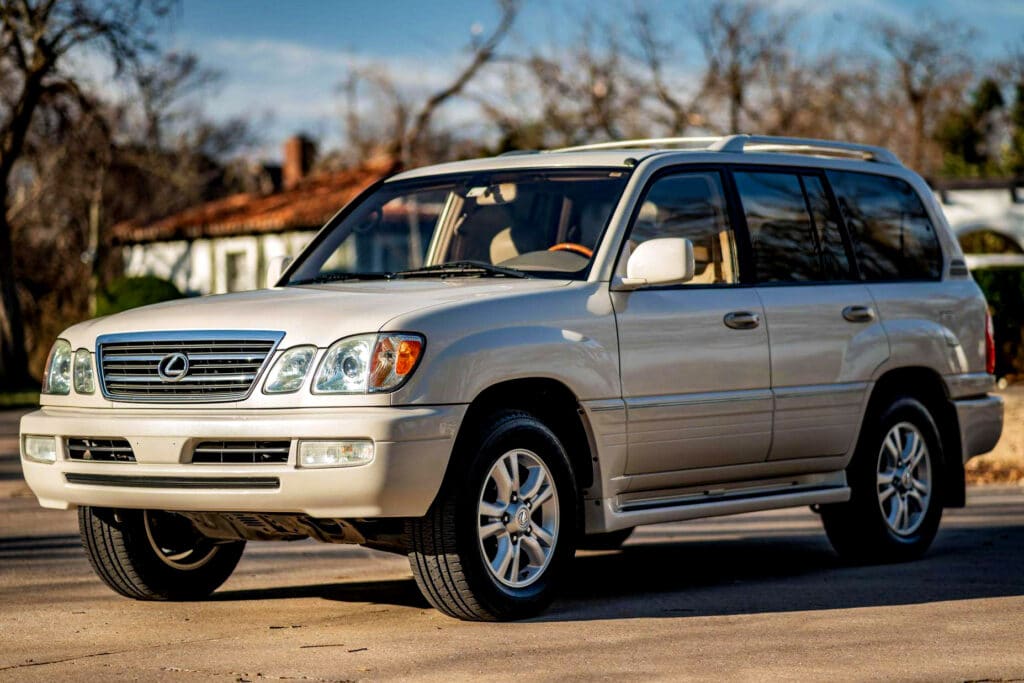
While you’ll certainly get a little more performance out of the model VVT-I and electronic throttle control, you’ll also have to spend a little more to get your hands on it.
Non-VVT-i and Electronic Throttle Control Vehicles
- 2002-2004 Lexus GX 470
- 1998-2005 Lexus LX 470
- 1998-2005 Toyota Land Cruiser
- 2002-2004 Toyota 4Runner
- 1999-2004 Toyota Tundra
- 2000-2004 Toyota Sequoia
VVT-i and Electronic Throttle Control Vehicles
- 2004-2009 Lexus GX 470
- 2005-2007 Lexus LX 470
- 2005-2011 Toyota Land Cruiser
- 2005-2009 Toyota 4Runner
- 2005-2009 Toyota Tundra
- 2004-2009 Toyota Sequoia
Toyota 2UZ-FE 4.7L V8 Engine Specs

Engine Code: 2UZ-FE
Layout: Inline four with DOHC
Cylinder Block Material: Cast iron
Fuel System: Fuel injection
Displacement: 4,664 cc
Cylinder Bore: 94 mm
Piston Stroke: 84 mm
Compression Ratio: 9.6:1 – 10.0:1
Power: 230-232 hp without VVT-i, 271-282 hp with VVT-i
Torque: 300-311 lb-ft without VVT-i, 315-325 lb-ft with VVT-i
Firing Order: 1-8-4-3-6-5-7-2
Production Years: 1998 to 2011
Engine Weight: 562 lbs
While there are quite a few specifications to note with the 2UZ-FE engine, one of the most important things to be aware of is the cast iron engine block. This makes it more durable than the 1UZ-FE and 3UZ-FE engines, even though it doesn’t have higher performance specs.
But with a 4.7 L Toyota engine, it’s not like this engine lacks power when it’s stock, it’s just better suited for low-end torque applications. The non-VVT-i engine provides between 300 and 311 lb-ft, while the newer models offer between 315 and 325 lb-ft of torque.
Modifying the 2UZ-FE
One of the advantages of Toyota using a cast-iron block with the 2UZ-FE engine is that it’s more durable and can handle a lot more power than what it’s designed for.
It’s because of this ultra-durable cast-iron block that it’s such a favorite among enthusiasts. The stronger engine block can handle more boost without cracking, which allows you to upgrade a ton more and get more out of it than you could ever dream of with a 1UZ-FE or a 3UZ-FE.
Naturally Aspirated vs Forced Induction
The 2UZ-FE is naturally aspirated from the factory, but that doesn’t mean forced induction is not an option if you’re looking to upgrade. In fact, even Toyota recognizes this, which is why they created a TRD supercharger specifically for this engine.
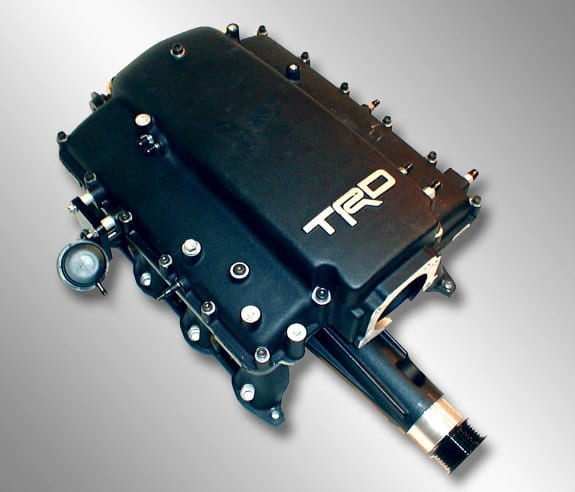
More specifically, it’s designed for 2UZ-equipped 2000-2009 Tundras, the 2003 GX 460, and the 2003-2009 4Runner.
However, if you’re looking to slap on an aftermarket turbocharger or supercharger, of which there are plenty, then there are a few things you should be aware of.
First, you want to max out the boost at 5 psi unless you’re upgrading other engine internals. Key components you’ll need to upgrade include the head studs, the pistons, rods, intercooler, and you’ll need to upgrade the fuel supply.
Some owners claim to have safely pushed 8 to 9 psi on a stock block, but in our experience, it’s only a matter of time until you run into problems if you push the limit like this.
If you do all this you should be able to push 9 pounds of boost safely, but some owners claim they can push well past this number. You might be able to but proceed with caution so you don’t blow anything up.
Also, remember that anytime you put on a new turbo or supercharger you need to tune the engine to prevent damage and get the results you’re looking for.
Reliability and Problems
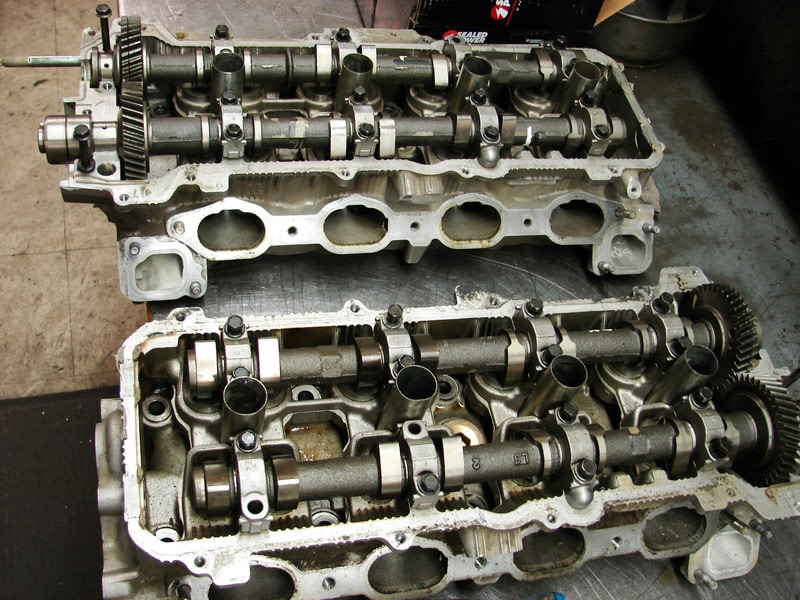
While auto enthusiasts generally agree that the 2UZ-FE is one of Toyota’s most reliable engines, there are a few issues that you’re bound to run into eventually.
So, if you’re looking to get the most out of your Toyota 4.7 engine, you’ll want to keep an eye on these three things and address them as soon as possible if they do come up.
Cracked Exhaust Manifolds
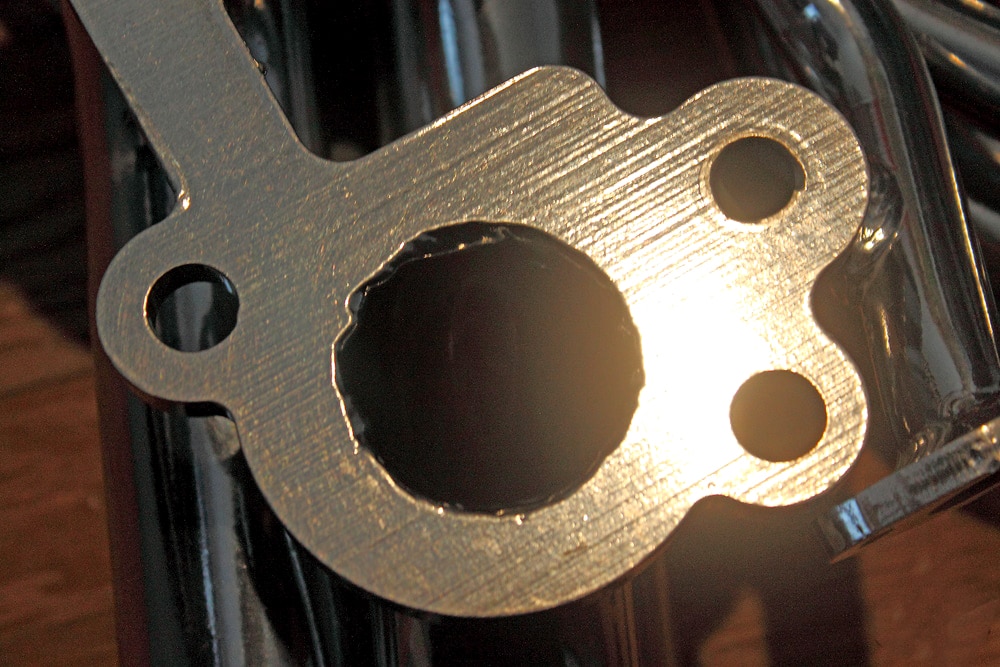
This is by far one of the most common problems with a 2UZ-FE engine. The exhaust manifold setup on these engines is extremely effective, but the downside is that they heat up a bit too quickly and a bit too much because of this.
When this happens it leads to small cracks where the manifold and the flange meet. Typically, you don’t have to do anything if you don’t want to.
However, the most noticeable symptom is a ticking sound coming from the exhaust manifold, and many drivers obviously don’t want to deal with the noise. Sometimes the issue will spread and lead to bigger problems like a failed emissions test and a check engine light, but this isn’t always the case.
There are two potential fixes for a cracked exhaust manifold. You can add some metal and weld it to the exhaust manifold, or you can replace the entire manifold.
Timing Belt
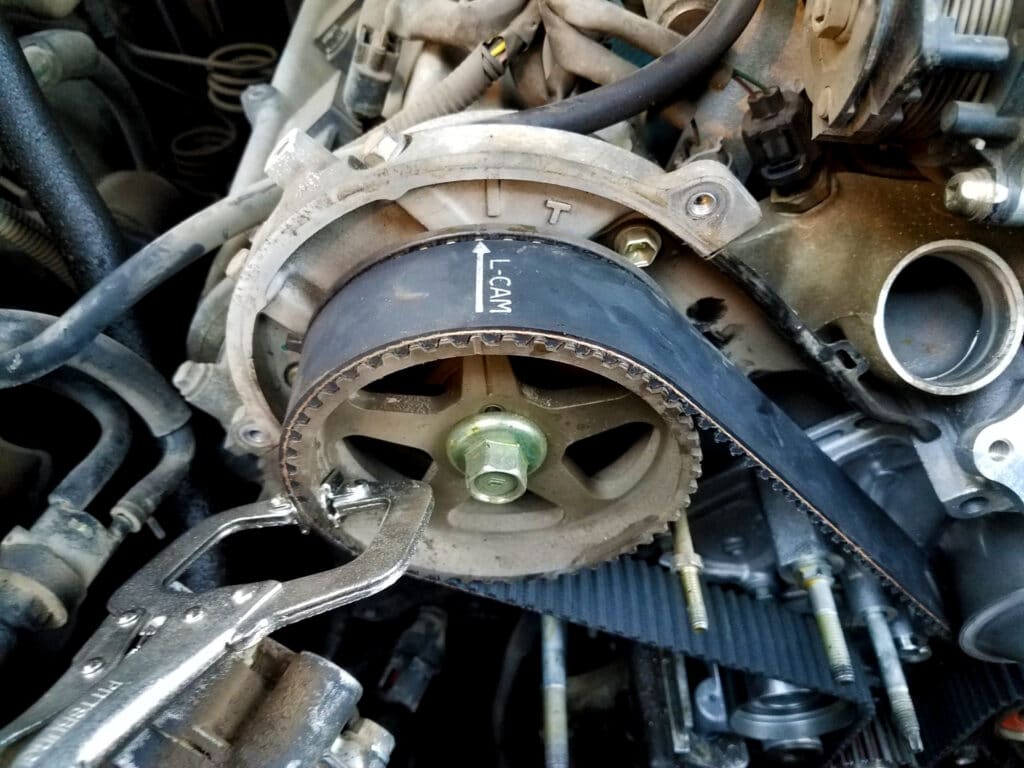
Toyota built this engine to last in a lot of ways, but one area they could’ve done better is by using a timing chain instead of a timing belt. It’s not that the timing belt fails any faster than any other timing belt, but you do need to replace them regularly.
More specifically, Toyota recommends changing the timing belt every 6 years or 90,000 miles, whichever occurs first.
Meanwhile, if a vehicle uses a timing chain instead of a timing belt, it can last 200,000 or even 300,000 miles before you need to replace it. Toyota did recognize this on newer engines, and that’s why they revamped the UZ series engines to use timing chains instead of belts.
While there are some symptoms of a failing timing belt, it’s always better to replace it at the service intervals instead. That’s because timing belts break, or snap, instead of a slow failure, and when this happens it can lead to a litany of engine problems and damage.
Sometimes you’ll notice that the engine is ticking, misfiring, or creating slapping sounds when the belt starts to go a little slack before failing, but there’s no guarantee it’ll do this before failing completely.
If you do notice any of these symptoms and trace them back to your timing belt, consider yourself lucky that it wasn’t any worse.
Fortunately, accessing and changing the timing belt on a 2UZ-FE engine is a bit easier than with many other engines, but it is a precision job that you can’t screw up or it can lead to engine damage. If you opt for a mechanic to handle it, expect to spend anywhere from $700 to $1,000.
Water Pump
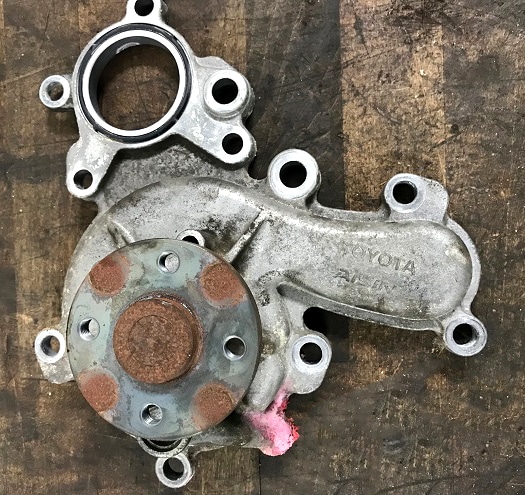
Once again the water pump isn’t a glaring problem like the exhaust manifold with the 2UZ-FE, but it is a component that needs some attention every now and again.
And because it’s a component you should change out regularly, we highly recommend putting it on the same service interval as the timing belt. The water pump is known for small leaks if you don’t change out the gasket every once in a while, but even worse the entire water pump can seize up as it gets older.
It’s not that much extra maintenance to replace the water pump if you’re already replacing the timing belt, and it can help you avoid further problems and damage.
Expect to spend about $150 to $200 for the part, and then tack on another $100 or $200 for labor if you’re taking it to a mechanic and they’re already replacing the timing belt.
Concluding Thoughts
Few engines can handle as many upgrades as the 2UZ-FE, and that’s why automotive enthusiasts rave about the potential capabilities of this engine. If you still don’t know what all the hype is about, just check out some of the builds this engine offers.
Do you have a 2UZ-FE engine and have you performed any upgrades? We’d love to hear about them, so go ahead and drop a comment below! Of course, if you do have any questions we’d love to help you out with those too!


6 comments
… how can I tell if my timing belt has already been replaced?
Thanks for the useful information! This is probably a long shot, but can a non-VVT-I 2UZ-FE engine be replaced with a VVT-I? If so, do you know what other modifications would be necessary? Even the parts people at the dealerships have not been able to explain the difference between the first and second generation 2UZ-FE engines and why they aren’t interchangeable, and it seems to me like the VVT-I is the only real difference. Trying to help get a replacement engine for a non-VVT-I engine, but they are impossible to find, so any information would be greatly appreciated. Thanks!
I just bought a 2006 4runner v8. That falls within those years. I’m gonna go check it right now. Thanks for the great advice, and knowledge.
I have a 2UZ in my 2005 LandCruiser.
I was wondering what upgrades I can do to first improve fuel economy and if possible performance.
It has electronic throttle control.
I recently changed the timing belt but after reading your article should probably have changed the water pump also.
Hello ninjas, I hope you are well! I was reading this article and I found it very interesting! I wanted to ask if running a vehicle with a damaged transmission for a long time could affect the engine!?! I have a 2005 Lexus GX-470 with a damaged transmission. When I put it in drive it stays in neutral for several seconds and then takes the shift. Sometimes when I start in first gear it also seems like it stays in neutral because it starts but very slowly. I have to press the accelerator hard to get it to shift, but when it does I have to release the accelerator because it grabs the shift suddenly and starts very quickly. On some occasions it seems that the transmission cannot find the appropriate shift and it sounds like it is changing from one gear to another. This symptom has increased over time. In October of last year I was about to arrive home and I noticed in the rearview mirror that the GX was emitting smoke. I stopped quickly, I opened up the bonnet but I couldn’t see much because of the smoke, but when I got out to look under the engine it was leaking a lot of engine oil… I haven’t used it since. Question: Can a transmission malfunction cause the engine to heat up or affect it in any way?
I also wanted to ask if some information that appears in the article was an error or is it correct?
When they talk about this topic: Naturally Aspirated vs Forced Induction, the article says that “Toyota created a TRD supercharger specifically for this engine.” It is then mentioned that there are a few models for which they have been specifically designed for 2UZ-equipped 2000-2009 Tundras, the 2003 GX 460, and the 2003-2009 4Runner. In 2003 it said GX-460… isn’t it supposed to be 470…? I understand that the 470 was created from 2004 – 2009, but the 460 I believe started from 2010 onwards.
Hello ninjas, I hope you are well! I was reading this article and I found it very interesting! I wanted to ask if running a vehicle with a damaged transmission for a long time could affect the engine!?! I have a 2005 Lexus GX-470 with a damaged transmission. When I put it in drive it stays in neutral for several seconds and then takes the shift. Sometimes when I start in first gear it also seems like it stays in neutral because it starts but very slowly. I have to press the accelerator hard to get it to shift, but when it does I have to release the accelerator because it grabs the shift suddenly and starts very quickly. On some occasions it seems that the transmission cannot find the appropriate shift and it sounds like it is changing from one gear to another. This symptom has increased over time. In October of last year I was about to arrive home and I noticed in the rearview mirror that the GX was emitting smoke. I stopped quickly, I opened up the bonnet but I couldn’t see much because of the smoke, but when I got out to look under the engine it was leaking a lot of engine oil… I haven’t used it since. Question: Can a transmission malfunction cause the engine to heat up or affect it in any way?
I also wanted to ask if some information that appears in the article was an error or is it correct?
When they talk about this topic: Naturally Aspirated vs Forced Induction, the article says that “Toyota created a TRD supercharger specifically for this engine.” It is then mentioned that there are a few models for which they have been specifically designed for 2UZ-equipped 2000-2009 Tundras, the 2003 GX 460, and the 2003-2009 4Runner. In 2003 it said GX-460… isn’t it supposed to be 470…? I understand that the 470 was created from 2004 – 2009, but the 460 I believe started from 2010 onwards.
Thanks! / Muchas gracias!
Marcel